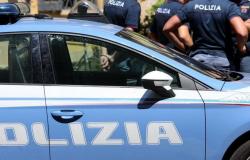«An overall positive situation for four out of five waterways, although there are some points sampled that present critical issues». Analysis data presented today surface water samples collected in five rivers in Emilia-Romagna: Trebbia, Enza, Savio, Lamone and Po di Volano; samplings carried out between May and June last, as part of the activities planned by the project “Against the current – the Net generation and the challenges of the changing climate”, financed with regional funds destined for the Third Sector.
«The sampling – explains the press release – involved volunteers from Legambiente who were specifically trained by Arpaeproject partners, who carried out the activity with the methodologies used by the Agency itself; the samples collected were analyzed by accredited laboratories. The parameters observed by Legambiente, in addition to the infamous Escherichia coli bacteria and fecal coliforms – the bacteria whose presence allows us to verify the actual state of water purification – also included nitrates and phosphates – nutrients that favor the eutrophication of water – and glyphosate, a synthetic herbicide used extensively for about 40 years in agriculture”.
«As for the microbiological parameters – they continue – in four out of five rivers the data are below the threshold established by the ministerial decree 03/30/2010 which defines the bathing water quality – taken as a reference, even if in the whole regional territory there are no internal waters identified as waters intended for bathing – although in one point along the Savio and one along the Trebbia are close to this limit. As regards the Po di Volano, on the other hand, values well above the threshold were noted in both sampled points, indicating the probable presence of direct discharges into the watercourse. For the evaluation of the results of the analyses relating to nitrates and phosphates, the threshold values of the Limeco indicator were considered, which define the quality of the water as sufficient. Also in this case, for three out of five rivers, the values were below this threshold; in many cases there were no concentrations detectable by the analysis instruments. The points of exceedance were instead those located in the Lamone (for the presence of nitrates) and in the two sampled points on the Po di Volano (for both parameters).
«Lastly, the presence of the glyphosate or its metabolite, Ampa: glyphosate is a very widespread herbicide in the agricultural sector due to its effectiveness, but its strong toxicity for pollinating insects has been demonstrated, while the possible correlation with the development of tumors in humans is still the subject of discussion within the scientific community even though the International Agency for Cancer Research (WHO) has included it among the 66 risk factor substances. Also in this case its presence is lower than the legal limits (although it was detected in all the samples in which its presence was analysed), except in the Po di Volano and in one sampled point in the Savio”.
«The impacts of human activities and settlements on waterways are an important element for monitoring the influence that man has on the environment in which he lives», underlines David Ferraresi, president of Legambiente Emilia-Romagna. «With the Controcorrente project we want to strengthen citizens’ awareness of the water quality of water bodies and the protection of river ecosystems in the Emilia-Romagna area through training, citizen science and dissemination activities».
«The results of these monitoring, an activity which itself allowed us to offer specific training to the young volunteers of the Legambiente clubs and the associations with which they collaborate, give us a picture of lights and shadows. From this first phase of project activity in the field we emerge with a conviction: the role of citizens and associations is useful and complementary to that of public agencies that deal with environmental protection, both to spread knowledge among people and to actively contribute to monitoring the quality of the environment and resolving any critical issues. From the information we have collected, a phase of involvement of public administrations will obviously follow, in order to understand how we can act to reduce the impacts that have been observed”.
The activities of the Controcorrente project – they conclude – will continue in the coming months, with a new monitoring which will be carried out by Legambiente volunteers during the autumn and will be useful for comparing data relating to two different moments of the year.






